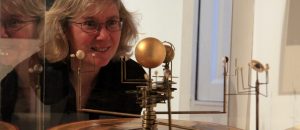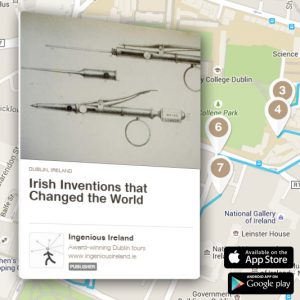Possibly the first portable computer — more “table top” than “laptop” — was designed around 1907 by an inventive Irish accountant, Percy Ludgate. His invention gets a place in the history of computing, although it was never built. Ludgate died 90 years ago this week.

Percy Ludgate, accountant by day, computer designer by night!
Since the invention of the abacus, people have been trying to build more complex calculating machines. Charles Babbage (1791-1871), the ‘grandfather of computing’, spent years and a fortune designing his programmable calculating machines. His ideas were based on the Jacquard loom, where punched cards controlled the patterns. But his machines were impossible to build and only small sections were ever attempted. And even these were enormous, ponderously slow – everything was reduced to addition or subtraction – and required thousands of precision-engineered metal parts.
Percy Ludgate’s design was also based on the Jacquard loom, but was different in most other respects from Babbage’s machine, and when Ludgate started on his ideas, he initially knew nothing of Babbage. Where Babbage used columns of toothed discs to store numbers, for example, Ludgate (1883-1922) opted for a simpler shuttle mechanism.
Ludgate’s ‘analytical machine’ was programmable, yet small enough to be portable, and it had all the elements of a modern computer: a mechanism for storing data, ways to input data and program the machine (using pre-punched ‘formula’ tape and/or keyboards), a printer and even an ‘operating system’, all of which Ludgate designed himself. (More details: article from The Computer Journal, 1971)
Uniquely, Ludgate’s mechanical computer had two innovative features: it could be stopped at any stage in a calculation to add new variables, and it could do subroutines. (Ludgate’s approach to calculations was also unusual: for multiplication he developed a technique using partial products; for division he used a table of reciprocals and a rapidly converging series using subroutines.)
He calculated that his engine would multiply two 20-digit numbers in under ten seconds, and take two minutes to determine the logarithm of a number. It could also be set to solve algebraic equations and geometric problems. Ludgate envisaged it would be powered by an electrical motor, and the calculations automated, and the complete device, measuring about two feet in every direction, would be portable.
Sadly, the machine was probably never made. During World War I Ludgate was diverted to work on a committee organising the supply of oats for the British cavalry, and he seems not to have returned to his computer.
He died of pneumonia aged 39, after returning from a Swiss walking holiday. In 1991 the British Museum made the first complete Babbage difference engine. Sadly, little of Percy Ludgate’s design survives, so we will probably never see a working model of this pioneering Irish calculating engine.
Percy Ludgate was born in Skibbereen and studied at Rathmines College of Commerce, where he was a gold medal student, before joining a Dublin firm of accountants. From 1903 he spent his spare time designing his analytical machine, presenting the details to the Royal Dublin Society in 1909. This brought him to international attention and in 1914 the Royal Society invited him to lecture in Edinburgh at a special conference on mathematics and computing.
If you liked this, read lots more ingenious stories like it in Ingenious Dublin, Mary Mulvihill’s latest book, available now as an ebook from Amazon. Or try our audio guided tours of ingenious Dublin.







Comments are closed.